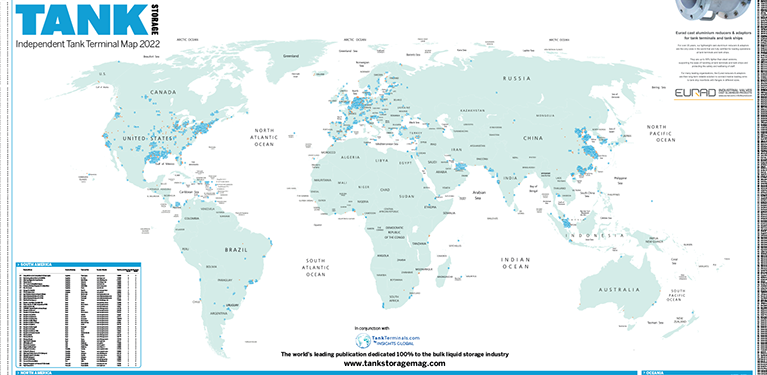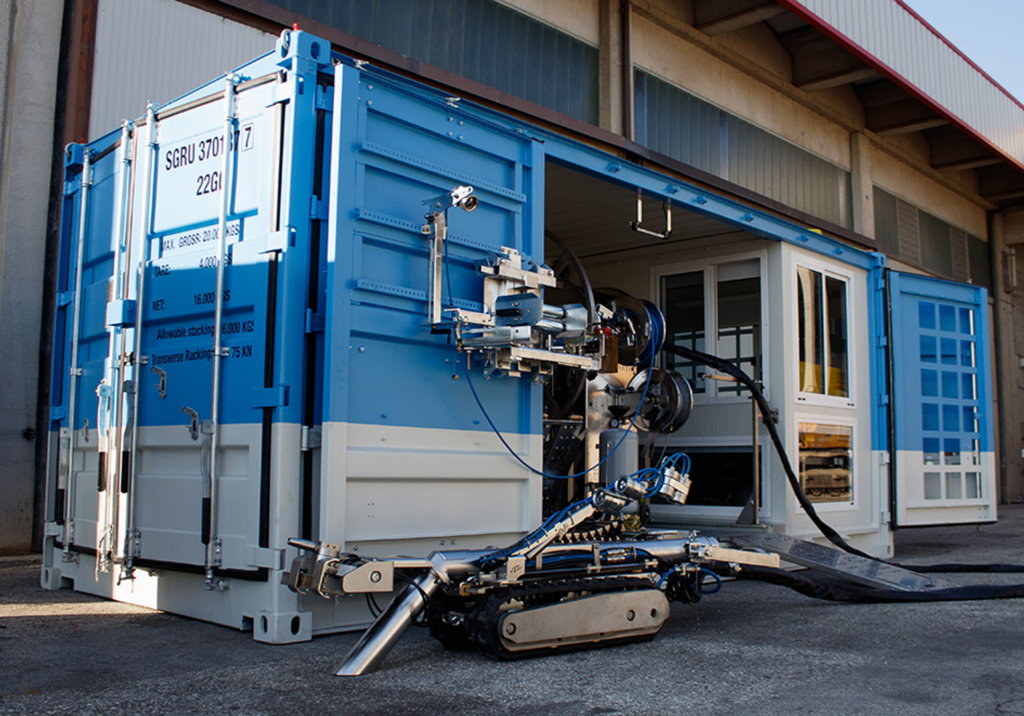Gerotto examines how the use of robots can make desludging an external floating roof crude oil tank easier
Crude oil is one of the toughest materials that can be found in a tank. The mixture of hydrocarbons that makes up the oil will vary depending on the place where the oil is found. This has a big impact on the harshness of the product. The quantity of sulphur determines if the petroleum is labelled as ‘sweet crude’ (<0.5% of sulphurs) or ‘sour crude’ (>0.5% of sulphurs) and the concentration of sulphur or oxygen in the oil can cause corrosion during the refining process.
Desludging A Tank
The following case study reports the use of robots to de-sludge 500 m3 of sludge accumulated into a floating roof crude oil tank. Due to corrosion on the roof’s legs, caused by the concentration of sulphur and oxygen, the roof around the centre collapsed. Only 65% of the tank interior remained accessible. The use of a no-man entry robot was the only safe option. Oil storage tanks are crucial components in the oil and gas industry, serving as a storage medium for crude oil before it is transported for further processing. Over time, oil storage tanks can accumulate sludge, which can compromise the integrity of the tank’s structure, capacity and the quality of the stored oil. Therefore, periodic cleaning and maintenance of oil storage tanks are essential to ensure safe and efficient operation.
Cleaning Methodology
The traditional method of cleaning an oil storage tank is through personnel entering the tank and manually removing the sludge. However, manual cleaning is a time-consuming and hazardous process, as workers are exposed to toxic fumes and the risk of accidents. Robotic cleaning involves using remotely operated machines to clean the inside of the tank, thereby eliminating the need for workers to enter the tank.
The robotic system was combined with the use of a suction pump or truck to remove the sludge from the tank’s walls and floor. The entire operation was completed with a final cleaning using high pressure waterjet by the robot. The sludge is then pumped out of the tank and disposed of safely. In this case, the robotic cleaning method was used entirely to de-sludge and clean the tank. An ATEX Zone 0 or IECEX or UL robot that can enter a tank from the side manhole of 600 mm. The machine is equipped with bronze auger to avoid sparks and comes with varied high-pressure nozzles to fluidify the material if needed, but with minimal consumption of water. The intrinsically safe LED lights and cameras provides a clear view of the operations inside the tank, letting the operators work in the safe area. The robot is fully hydraulic and remote controlled by a skid-mounted or containerised control unit. The robot is then connected to a vacuum truck by a suction hose.
Two-Stage Process
The cleaning process of the tank involved two stages: desludging and hydro jetting. Desludging is the process of removing the accumulated sludge from the tank, while hydro jetting is the process of cleaning the tank’s walls and floor, so as to achieve gas-free status. The desludging process took 33 days, during which the accumulated sludge was pumped out of the tank using vacuum trucks. Once the tank was empty, the hydro jetting process began. The hydro jetting process took 27 days, during which the robotic system was used to clean the tank’s walls and floor thoroughly. The primary challenge encountered during the cleaning process was the corrosion damage to the tank’s roof top and roof leg. The corrosion was extensive, and there was a risk of the tank’s roof collapsing during the cleaning process. Therefore, additional measures were taken to avoid any collision between the robot and the internal structures such as roof legs.
Highly Effective Process
The robotic cleaning method proved to be highly effective in cleaning the tank. The process was completed within 60 days, which was significantly faster than the traditional manual cleaning method. The robotic system eliminated the need for personnel to enter the tank and reduced the risk of accidents and exposure to toxic fumes significantly. Finally, the cleaning process removed all the accumulated sludge from the tank and restored its structural integrity.
















